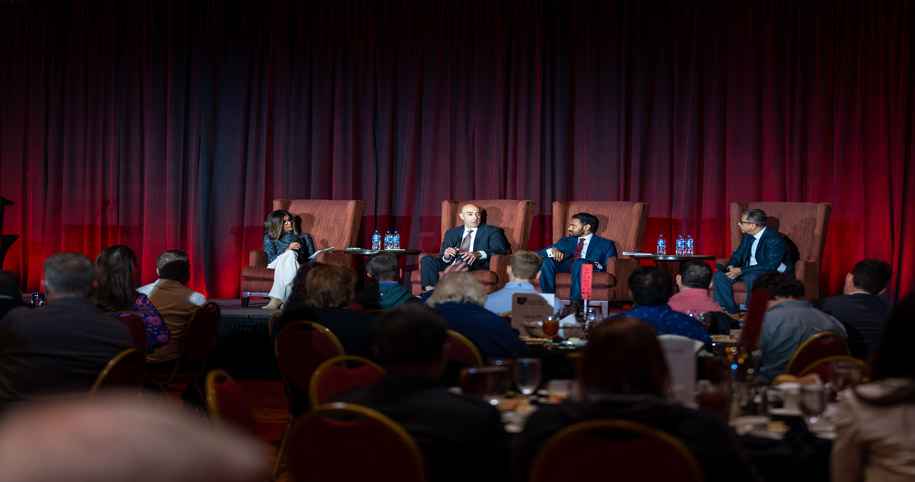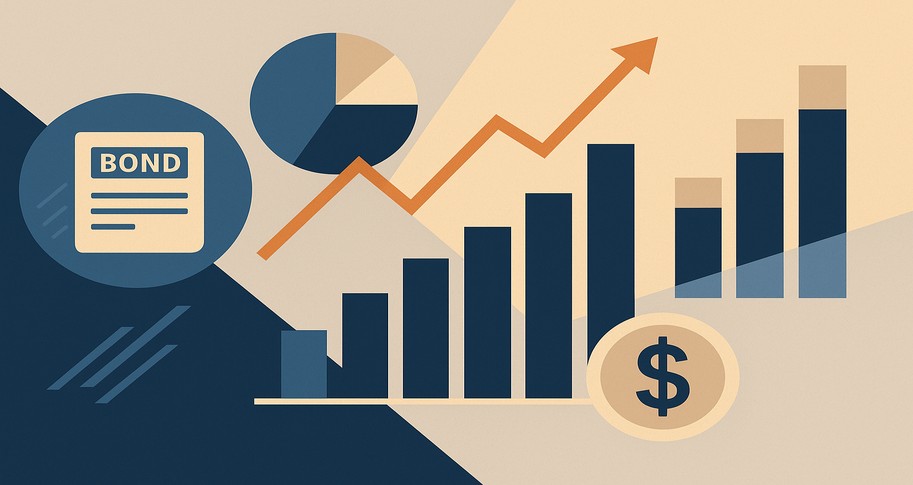
On Jan. 31, the Sam M. Walton College of Business’s Center for Business & Economics Research hosted the 31st Annual Business Forecast Luncheon. Dana Peterson, chief economist and leader of the Economy, Strategy, & Finance Center at The Conference Board, provided the international forecast. Sam Khater, vice president and chief economist at Freddie Mac, provided the domestic forecast. Mervin Jebaraj, the director of the Center for Business & Economics Research, provided the state and regional forecast. The event was moderated by Rupal Poltack, CEO of Walton Enterprises.
Nobody knows just how 2025 will unfold: downside risks could sink everyone’s forecasts, everything could stay the same and prove these forecasts (mostly) true, or positive tailwinds could propel us forward at a faster than expected rate. Let’s examine, then, what the forecasters think 2025 has in store.
Looking California, Feeling Minnesota
If complaining (justifiably, some would add) about the economy were an Olympic sport, many of us would have spent much of the past year standing on podiums. Egg prices, inflation, housing prices, interest rates, and the list can go on and on and on. The vibes are just, well, off, even if the numbers look good. The economy looks like sunny California on paper, but it still feels pretty cold and gray to many U.S. consumers.
As Sam Khater noted in his report on the U.S. economy and housing market, though, the economy is stable and growing, with consumer spending on goods and services driving the economy’s resilience. The U.S. economy is expected to continue to expand, but that growth is expected to slow next year and beyond. That may seem like a cold comfort, but it is very good news compared to many similarly well-developed economies. As Dana Peterson noted in her global economic outlook, the share of global GDP for mature economies and European economies is expected to decline in the long run, whereas the U.S. will likely remain at or very near its current level.
The U.S. economy has, simply put, outperformed similarly developed economies following the pandemic. The U.S. economy is resilient and has bounced back far quicker than expected. Plus, as Jebaraj notes, this economic growth gives us a lot of fiscal and mental wiggle room to deal with big challenges, such as climate change and labor force shortages. It’s far harder to address these challenges as a nation when your economy is not growing.
What About Housing?
And then there’s housing, which also feels pretty cold and gray to many U.S. consumers. Housing is in the doldrums and remains unaffordable for many; this unaffordability is further complicated by supply considerations, with low levels of homebuilding alongside an already low inventory, and by the fact that sales activity is low. Simply put, people cannot buy yet are not selling: in some respects, it’s neither a buyer’s market nor a seller’s market.
Some green shoots, however, can be seen in the data, as Khater noted. Homebuilding activity is improving, even though it’s still below pre-2008 levels. Also, “migration arbitrage,” which entails homebuyer migration from more expensive regions to smaller and more affordable locales, is noticeably affecting population flows in the country.
This migration arbitrage can benefit these oft-overlooked cities. Northwest Arkansas, for example, is one of the many markets that strike a nice balance of a strong local economy with housing prices that look very attractive to those being priced out of coastal areas or large urban areas. As Jebaraj noted in his regional forecast, the Northwest Arkansas area saw more houses sold this year with a 6.5% interest rate than it did prior to the pandemic with a much lower rate!
The downside to this rapid growth is that locals could get priced out should housing supply remain stagnant. Even though home price growth is slowing in the area, affordability has become more of a concern. There’s a growing recognition in state legislatures and municipalities that the zoning and regulations of the past may need to be updated or removed altogether given the rapid changes in technology and building materials. These updates could make building affordable homes easier.
Arkansas, NWA is Growing
The Arkansas economy remains strong. Its growth rate, without the agriculture sector, average around 3.5% in the last four quarters, and its unemployment rate of 3.4% is just below the national average of 4%. In fact, Arkansas is just above record lows for unemployment and Northwest Arkansas has the lowest unemployment rate in the state.
Central Arkansas led the state in job growth, as it is the major healthcare hub for the state, with Northwest Arkansas right behind it. The wage growth over the past few years, alongside the low unemployment rates, demonstrates a strong labor market.
For students looking to join the workforce to professionals already established in it, this growth – despite all the possible uncertainties – should be seen as a silver lining. Yes, there are challenges and headwinds, but our economy – and our state – has shown a remarkable resilience thus far. I seriously doubt we’ll forget the lessons the past few years have taught us in 2025.




